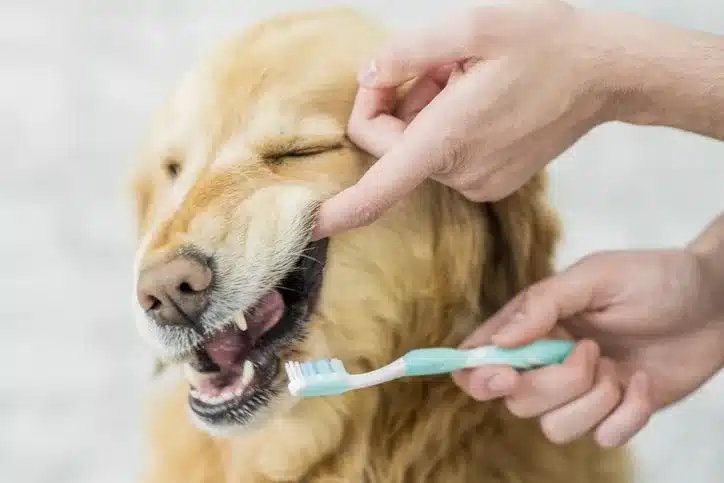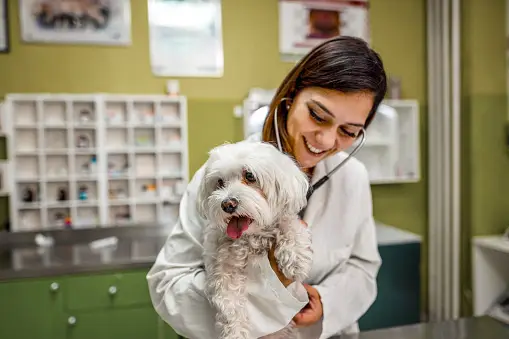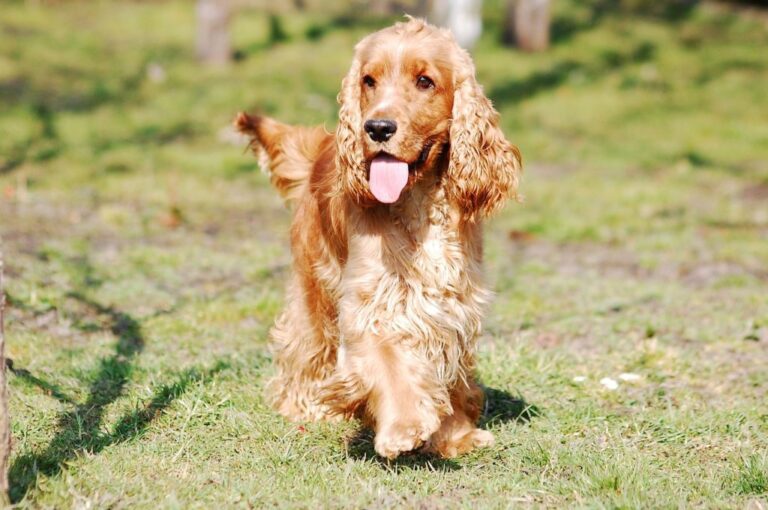It’s essential to understand that just like humans, dogs can experience stress too. Whether it’s due to separation anxiety, loud noises, or unfamiliar environments, managing your dog’s stress is crucial for their overall well-being. In this article, we will provide you with valuable tips and techniques to help keep your dog calm and relaxed. From creating a safe and comfortable space to incorporating exercise and mental stimulation into their routine, we have you covered. Read on to discover effective strategies that will make a positive difference in your dog’s life and ensure they lead a stress-free existence.
Understanding Dog Stress
Causes of dog stress
There are several factors that can contribute to dog stress. It is important for dog owners to be aware of these causes in order to help prevent or manage stress in their pets.
- Environmental changes: Dogs can become stressed when there are sudden changes in their environment, such as moving to a new house, a change in routine, or the introduction of new pets or family members.
- Lack of socialization: Dogs that are not properly socialized from a young age may experience stress when exposed to new people, animals, or environments.
- Separation anxiety: Dogs that become anxious or stressed when separated from their owners may exhibit signs of stress, such as excessive barking, destructive behavior, or house soiling.
- Fear or phobias: Dogs can develop fears or phobias of specific objects, sounds, or situations, which can cause them to experience stress. Common fears include thunderstorms, fireworks, or loud noises.
- Medical conditions: Certain medical conditions, such as chronic pain or hormonal imbalances, can contribute to stress in dogs. It is important to rule out any underlying health issues that may be causing or exacerbating stress.
Signs of dog stress
Dogs cannot verbally communicate their stress, so it is important for owners to be able to recognize the signs. By understanding these signs, owners can take appropriate actions to help alleviate their dog’s stress.
- Behavioral changes: Dogs may exhibit changes in behavior when they are stressed. This can include excessive barking, aggression, restlessness, or withdrawal from social interactions.
- Panting and drooling: Excessive panting or drooling can be a sign of stress in dogs. If your dog is displaying these symptoms in situations where they would not normally occur, it may be an indicator of stress.
- Loss of appetite: Dogs that are stressed may experience a loss of appetite. They may refuse to eat their regular meals or show disinterest in food altogether.
- Excessive grooming: Dogs may engage in excessive licking or grooming when they are stressed. This behavior can lead to skin irritations or bald patches.
- Digestive issues: Stress can also manifest in digestive issues such as diarrhea or constipation. If your dog is experiencing frequent gastrointestinal problems, stress may be a contributing factor.
By understanding the causes and signs of dog stress, owners can take proactive steps to help manage and alleviate stress in their furry companions.
Creating a Calm Environment
Creating a calm environment is essential for managing and reducing dog stress. By establishing a routine, providing a quiet and safe space, and using calming aids, you can help keep your dog calm and relaxed.
Establishing a routine
Dogs thrive on routine, as it provides them with a sense of security and predictability. By establishing a daily routine for your dog, you can help reduce their stress levels. Stick to consistent feeding times, regular exercise sessions, and set times for play and rest. Consistency in their daily activities will help your dog feel more at ease and reduce their anxiety.
Providing a quiet and safe space
Just like humans, dogs need a quiet and safe space where they can retreat to when they feel stressed or overwhelmed. Create a designated area in your home where your dog can relax and unwind. This could be a cozy corner with a comfortable bed or a crate that they can retreat to whenever they need some alone time. Make sure the space is away from noisy areas and provide them with toys or chew treats to keep them occupied.
Using calming aids
In some cases, dogs may benefit from the use of calming aids to help alleviate stress. There are various options available, including pheromone diffusers, calming sprays, and anxiety wraps. Pheromone diffusers release synthetic pheromones that mimic the natural calming scents produced by mother dogs, helping to create a soothing environment. Calming sprays can be applied to your dog’s bedding or around their designated space to promote relaxation. Anxiety wraps, such as Thundershirts, provide gentle pressure that can help calm anxious dogs. These aids can be used in conjunction with other stress-reducing techniques to create a more relaxed environment for your dog.
By implementing these strategies and creating a calm environment, you can effectively manage and reduce your dog’s stress levels. Remember, each dog is unique, so it may take some trial and error to find the right combination of techniques that work best for your furry friend.
Managing Dog Stress through Exercise
Regular physical exercise
Regular physical exercise is crucial for managing and reducing dog stress. Just like humans, dogs need a healthy outlet to release their pent-up energy and maintain their overall well-being. By incorporating regular exercise routines into your dog’s daily schedule, you can significantly reduce their stress levels and promote a calm and relaxed state of mind.
Physical activities such as daily walks, jogging, or playing fetch in the park provide an excellent opportunity for your dog to burn off excess energy and relieve stress. Aim for at least 30 minutes to an hour of exercise each day, depending on your dog’s breed, age, and overall health. However, always consult with your veterinarian to determine the appropriate exercise duration and intensity for your specific dog.
Mental stimulation activities
In addition to physical exercise, mental stimulation activities are equally important for managing dog stress. Mental engagement helps keep your dog’s mind active and prevents boredom, which can contribute to stress and anxiety. Incorporating these activities into your dog’s routine will not only provide mental stimulation but also help them relax and unwind.
One effective mental stimulation activity is puzzle toys. These toys require your dog to problem-solve and figure out how to access treats or toys hidden inside. By engaging their brain in these activities, you can help redirect their focus from stress triggers and promote a calmer state of mind.
Another great option is obedience training. Teaching your dog new commands and tricks not only helps them learn and grow but also provides mental stimulation. Training sessions allow your dog to focus on tasks and be rewarded for their accomplishments, boosting their confidence and reducing stress levels.
Additionally, interactive toys that encourage play and engagement, such as treat-dispensing toys or interactive feeding puzzles, can keep your dog entertained while stimulating their mind. These activities can help distract your dog from stressors and provide a positive outlet for their energy.
Remember, a combination of regular physical exercise and mental stimulation activities is key to managing dog stress. By providing your furry friend with an active lifestyle and engaging their mind, you can ensure they remain calm, relaxed, and stress-free.
Implementing Relaxation Techniques
Massage and touch therapy
One effective way to help your dog relax and reduce stress is through massage and touch therapy. Just like humans, dogs can benefit greatly from a soothing massage. Gently massaging your dog’s muscles can help release tension and promote relaxation. Start by using slow, firm strokes and gradually increase the pressure if your dog seems comfortable. Pay attention to your dog’s body language and adjust your technique accordingly. Some dogs may prefer light touches, while others may enjoy a deeper massage.
In addition to massage, touch therapy involves physical contact such as cuddling, petting, or simply resting your hand on your dog’s body. These actions can provide a sense of security and comfort, helping to alleviate stress. Experiment with different types of touch to see what works best for your dog. Some dogs may respond well to gentle stroking, while others may prefer a more firm touch. Observe your dog’s reactions and cues to determine the most effective touch therapy technique.
Music and aromatherapy
Another way to create a relaxing environment for your dog is by incorporating music and aromatherapy. Just like humans, dogs can be sensitive to their surroundings, including the sounds and scents in their environment. Playing calming music specifically designed for dogs can help create a soothing atmosphere. Look for classical or instrumental music with a slow tempo. Avoid loud or intense sounds that may contribute to your dog’s stress.
Aromatherapy can also be beneficial in reducing dog stress. Certain scents, such as lavender or chamomile, have calming properties that can help relax your dog. You can use essential oils or scented candles, but make sure to choose ones that are safe for dogs. Remember that dogs have a more sensitive sense of smell, so use aromatherapy in moderation. Monitor your dog’s reaction to ensure they are not overwhelmed by the scent.
Breathing exercises
Just like humans, dogs can also benefit from breathing exercises to help calm their mind and body. Deep breathing exercises can help your dog relax by slowing down their heart rate and promoting a sense of calmness. Start by finding a quiet and comfortable space where you and your dog can sit together. Take a deep breath in, and then slowly exhale while counting to four. Repeat this process several times, focusing on your dog’s breathing as well.
You can also try guided breathing exercises specifically designed for dogs. There are mobile applications and online resources available that offer guided meditations or breathing exercises for dogs. These exercises can be particularly helpful during stressful situations or when your dog is exhibiting signs of anxiety. Practice these breathing exercises regularly to help your dog develop a sense of relaxation and reduce their overall stress levels.
Seeking Professional Help
Consulting a veterinarian
One of the most important steps in managing dog stress is consulting a veterinarian. A veterinarian can provide valuable insights and advice on how to keep your dog calm and relaxed. They can also rule out any underlying medical conditions that may be contributing to your dog’s stress.
When you visit a veterinarian, make sure to provide them with a detailed history of your dog’s behavior and stress triggers. This will help them in diagnosing the cause of your dog’s stress and recommending appropriate treatment options. The veterinarian may suggest medication or supplements to help alleviate your dog’s stress, or they may recommend certain modifications in their diet or exercise routine.
Working with a dog behaviorist
In addition to consulting a veterinarian, working with a dog behaviorist can also be beneficial in managing your dog’s stress. A dog behaviorist is a professional who specializes in understanding and modifying dog behavior. They can help you identify the root causes of your dog’s stress and develop a tailored plan to address those issues.
A dog behaviorist will conduct a thorough assessment of your dog’s behavior and environment to determine the source of stress. They will then work with you to implement behavior modification techniques that can help reduce your dog’s stress levels. This may involve desensitization exercises, positive reinforcement training, or environmental changes to create a more calming and relaxing atmosphere for your dog.
Remember, seeking professional help from a veterinarian or a dog behaviorist is crucial in managing your dog’s stress. They have the expertise and experience to provide you with the necessary guidance and support to ensure your furry friend stays calm and relaxed.







